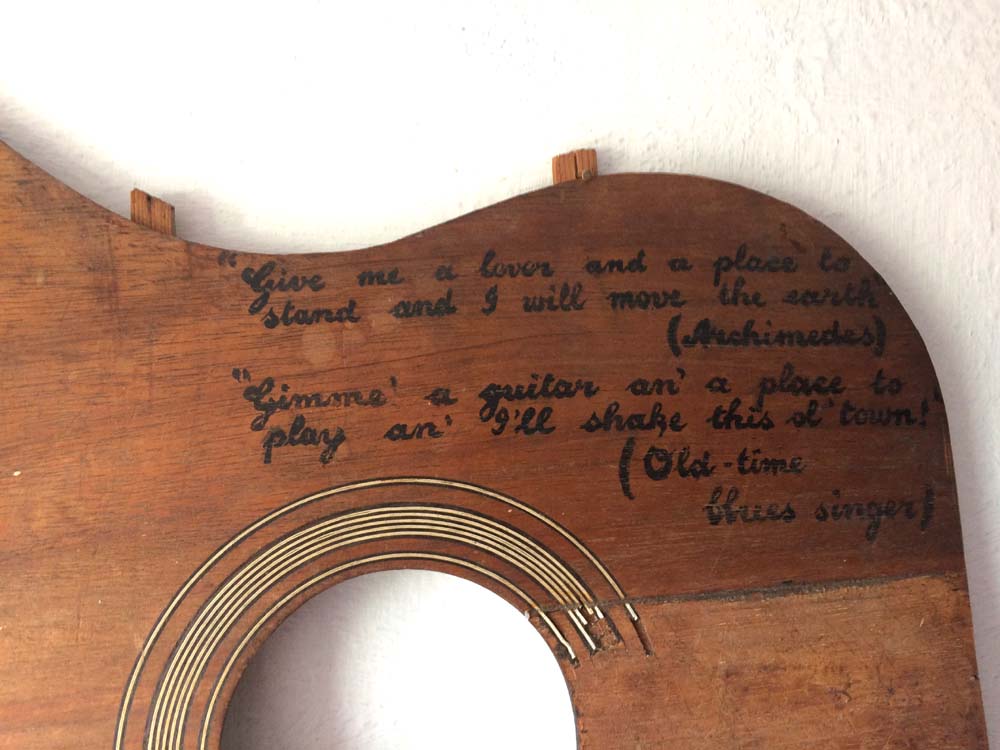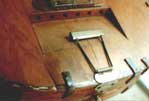
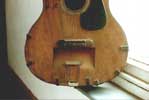
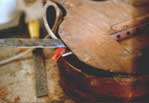
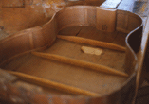


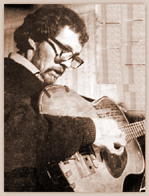
Early 60's folk club performance.

Chris Ayliffe:
guitar maker exstraordinaire!

Wizz plays the re-furbished La Foley in the Sound Techniques video.

A random collection of essays around Wizz's home town...
From '40s Croydon to London '80s Back in the 1960s, Wizz Jones was not only famous for being one of the best (and longest-haired) guitarists around the scene, he also sported a distinctly odd-looking guitar, the more legendary for being held together with bits of leather strap. Wizz's famed La Foley (which he believes was hand-made by one George Foley in the late '30s or '40s) has long since been "retired", but recently restored to "original" condition. Here, Wizz tells its story... Back in my beatnik days of 1959 I spotted this guitar in the window of Lew Davis music shop in Charing Cross Road. I used to spend a lot of time hanging around the shop as a young guitarist friend of mine worked there and the manager Jimmy Frost would often allow me to try out the acoustic guitars. Both Long John Baldry and Davy Graham had been into the shop and played the "La Foley" and were thinking of buying it. As I remember, it was priced at £20 and Jimmy allowed about a fiver part exchange on my old "Hofner Zenith" cello guitar. The Hofner's value was somewhat reduced by the sign "Ban The Bomb" which I had daubed across it in black paint at the end of an Aldermarston protest march! This habit, copied from Woody Guthrie ("This Machine Kills Fascists!") was carried over to the La Foley, only this time the legend was stolen from an Alan Lomax folk-song book and was rather more discreetly painted in bank script thus: By today's standards the La Foley was nothing special sound-wise but it was rare to see a Gibson or Martin in those days and it certainly was a bargain. It was in good condition and appeared to have had an easy life so far but it was about to be subjected to a rigorous testing on the streets of Europe for the next three years by an irresponsible itinerant busker called Wizz Jones! Enthusiastic guitar freaks would often ask the reason for the strange sloping table section and the six holes beneath the bridge and I would pretend that I knew the answer, telling them that it acted as a kind of resonator making the guitar louder or perhaps the holes were for ventilation when the playing got too hot! Eventually in 1967 when the guitar had become virtually unplayable, a friend (an up and coming guitarist called Ralph McTell) persuaded me to look at a second hand Epiphone Texan that he had seen in Selmer's and I finally succumbed, paying just seventy five pounds for this fine guitar which I still play today. The La Foley was retired to the bedroom wall for the next twenty years and was seen to crash to the floor a few times due to a poorly fastened rawlplug, a drunken party guest or an inquisitive child, thus as I thought, ending the life of the guitar. Then a few years ago the guitar maker Chris Ayliffe asked me if he could rebuild it using it as a project for his students. I told him that I considered it to be totally beyond repair and he was welcome to take it away forever! About three years later he insisted on returning it to me. He had completely restored it using most of the original guitar apart from the table. So the La Foley lives again and although its not up to professional standards for gigs it gives me much nostalgic pleasure to doodle upon it whilst watching TV (an annnoying habit - do other guitarists do this?) Folk Roots Magazine
|
